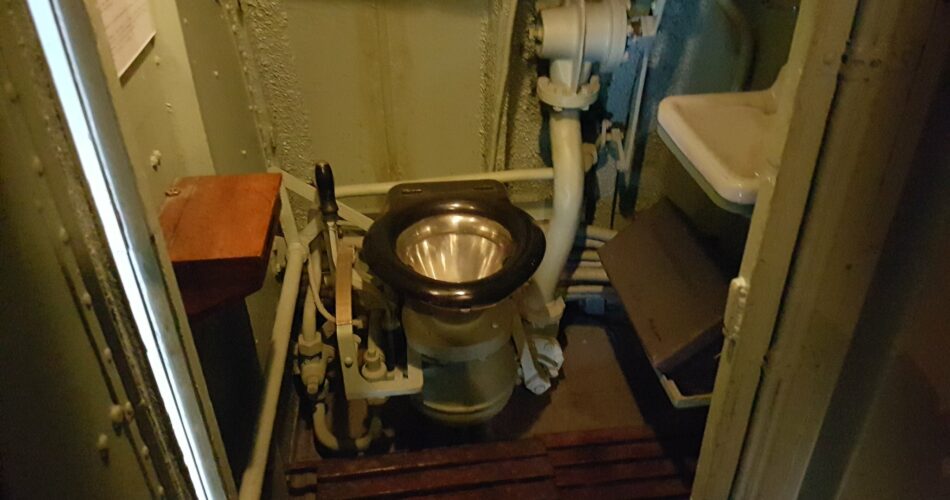The tricky logistics of flushing toilets on submarines
Due to long-standing maritime traditions, a submarine’s head is referred to as its toilet, just like on surface ships. Submarines find it far harder to handle everyday tasks, like flushing the toilet, than their surface counterparts.
On Quora, veteran US Navy submariner Dale Rich confirmed this claim.

Rich explains;
“Submarines have sanitary tanks that are designed to hold the human waste generated in the heads (shipboard bathrooms in the Navy). These tanks are routinely flushed to the open sea when the boat is in normal operating condition and are usually done when the boat is close to the surface while making routine evolutions at periscope depth. These tanks are emptied by using air stored in the air banks to pressurize the tanks to a pressure that is above the sea pressure exerted on the boat at the depth where the boat is operating. An example would be that if the boat was 100 feet deep at the keel, the air pressure to remove the waste would have to be above 44psi. This routine procedure is called ‘Blowing Sanitaries’ and is performed by the Machinist gang on the boat”.
Rich continues;
“When a submarine is operating in hostile waters, is on a mission to trail an enemy combatant, or is operating at extreme depths, the sanitaries cannot be emptied. There are various reasons for this, but the primary reason is that evolution has the potential to make significant noise and uses vital resources to perform the evolution. If the boat is at an extreme depth (below 500 feet), the amount of air needed to remove the waste increases dramatically. (At 500 feet at the keel, it would require air pressure to be above 215psi to push the waste from the tank). Air is a vital commodity on a submarine and might be needed, and better used, to push the submarine to the surface in an emergency rather than being wasted pushing waste out of the sanitary tank”.
“It is not unusual for a submarine to remain in a position where it cannot expose itself for many days at a time. During this time, the sanitaries start to fill up, and the heads are restricted. No showers, no laundry, limited use of the head, and no extra use of water. Usually, this is when the crew begins to beg for a ‘Mercy Blow’. The officer of the deck is always apprised of the situation and informs the Captain of the problem. Measures are taken to alleviate the situation if possible”.
Rich concludes;
“This is just one more problem that submariners have to deal with, but remember, all of them are volunteers and do the job because they love it!”
